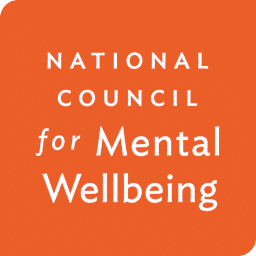Substance abuse disorder, particularly drug abuse, continues to be prevalent here in the U.S. One factor that is contributing to the issue, especially concerning younger people, are designer drugs.
Designer drugs are synthetic substances that mimic the effects of illegal drugs like cocaine. Often produced in illicit laboratories, these new psychoactive substances are cheap substitutes to the actual illicit drug.
It is partly due to this that they are steadily gaining wider use among adults and adolescents, including high school students. One of the designer drugs that are becoming more accessible and contributing to the increasing drug use are bath salts.
What Are Bath Salts?

Bath salts are classified as synthetic cathinone or synthetic stimulants. As the name suggests, they mimic the effects of illicit drugs including cocaine. These synthetic drugs got their innocuous-sounding name from regular Epsom bath salts due to how similar they look.
Like regular bath salts, these drugs have a white or off-white color and come in powder form. These bath salts are usually sold in small plastic or foil packages, regardless of whether they are sold online or on the streets.
The products are often marketed or sold as regular bath salts, plant food, glass cleaners, or research chemicals. Some even have labels indicating “not for human consumption” in order for sellers and buyers to circumvent the law based on a technicality.
Street Names for Bath Salts
When sold on the streets or online, bath salts also go by several other brand names. The names used are often unassuming to help it fly under the radar. Although some alternative names for bath salts contain similar words, such as pure ivory, ivory wave, lunar wave, many can’t be connected to each other.
Among the many street names for bath salts are:
- Flakka
- Blue Silk
- Bliss
- Cloud Nine
- Meow Meow
- Lunar Wave
- Ivory Wave
- Purple Wave
- Ocean Burst
- White Knight
- White Lightning
- White Dove
- Red Dove
- Snow Leopard
- Vanilla Sky
- Stardust
- Energy-1
- Pure Ivory
What Is In Bath Salts?
Two known chemicals used to create bath salts are mephedrone and methylenedioxypyrovalerone or MDPV.
These two chemicals are classified as Schedule I class drugs, which means they have a high risk of abuse and no known medical benefit. Mephedrone, in particular, has a high potential for overdose.
MDPV is classified as a phenethylamine and has a similar structure to cathinone. It is also structurally similar to methylenedioxymethamphetamine, also known as MDMA or ecstasy, another Schedule I hallucinogenic substance.
What Are Synthetic Cathinones?

Synthetic cathinones are one of the three main categories of designer drugs. These lab-made substances are also known as synthetic stimulants.
Designer drugs under this category are all related to the khat plant. Commonly grown in East Africa and southern Arabia, the khat plant is a shrub that naturally produces cathinone, a stimulant similar to amphetamine. Natives of the places where the khat plant grows are known to chew its leaves for their mild stimulant effects.
In contrast, the stimulant effects of synthetic cathinones are far stronger and carry a higher risk of endangering people’s health.
As stimulant substitutes, they imitate the effects of strong, illicit psychostimulants, such as cocaine, methamphetamine, and ecstasy. Designer drugs classified as synthetic cathinones are among the most popular sources of “legal highs” among users.
Common Types of Synthetic Cathinones
There are several types of synthetic cathinones commonly used or circulated, including MDPV and mephedrone — two common ingredients in bath salts. Other types of cathinones that may be used are:
- Bupropion
- Methylone
- Methcathinone
- Pyrovalerone
How Do Synthetic Cathinones Affect the Brain?
More research is necessary to figure out the full effects of synthetic cathinones on the human brain. Currently, studies show that these types of synthetic drugs affect the brain in a similar way to ecstasy, amphetamines, and MDMA.
On the positive side, these effects include:
- Feelings of euphoria or a rush of intense pleasure
- Feeling happy and energetic
- Intense connection to music
- Increased friendliness or sociability, such as wanting to talk more
- Heightened sex drive
On the negative side, though, it may also cause the following:
- Paranoia or extreme, unreasonable distrust
- Hallucinations
- Excited delirium
- Panic attacks
- Violent behavior
- Extreme agitation
- Suicidal thoughts
What Are the Other Health Effects of Synthetic Cathinones?
The effects of synthetic cathinones generally depends on the amount or dosage taken. In small doses, the effects are less serious, such as:
- Sweating
- Reduced appetite
- Restless sleep
- Distorted sense of time
- Dry mouth or thirst
- Muscle tension
- Light-headedness
However, when taken in high doses, synthetic cathinones may cause the following:
- Stomach pains
- Nausea
- Vomiting
- Skin rashes
- Tremors
- Convulsions
Synthetic cathinones are also shown to elevate heart rate, increase blood pressure, and cause chest pains. Delirium due to synthetic cathinone use can also lead to dehydration, kidney failure, and skeletal muscle tissue break down.
How Do People Use Bath Salts?
Since bath salts come in powder form, there are a few different ways that people can use them. Similar to cocaine and crystal meth, these can be sniffed or snorted up a nostril. It can also be orally ingested or swallowed, either on its own or mixed with a drink.
Bath salts can also be smoked or added into a solution and injected directly into a person’s bloodstream. These two methods are preferred by individuals who want an immediate and intense “rush” of the drug’s effects.
However, doing so also enhances the drug’s potential for addiction and its adverse health effects.
What Are the Effects of Bath Salts on the Body?
Bath salts are strong stimulants. They contain synthetic chemicals that increase activity in our brain and central nervous system, causing enhanced alertness.
At the same time, the drugs also cause euphoria, an out-of-body experience, and feelings of delirium.
How Long Does the High From Bath Salts Last?
In general, the duration of the euphoric and stimulating effects of bath salts can last between three to four hours. When ingested orally, users may feel its effects starting at the 15-minute mark, though it may also take as long as 45 minutes.
The peak of the “rush” feeling typically hits after an hour and a half, with the entire duration lasting a couple more hours before the person experiences a harsh “crash.”
Are Bath Salts Illegal?
Yes, despite being called “legal highs”, bath salts are still considered illegal. More than 40 states have already banned commonly abused synthetic cathinones, including bath salts.
Additionally, the Federal Analog Act modified the Controlled Substances Act to include, preemptively ban, and illegalize any kind of designer drug. This includes any substance with a “chemically similar” structure to a recognized illicit drug.
The U.S. Drug Enforcement Administration (DEA) also added several designer drugs, including two synthetic stimulants referred to as bath salts in the streets, onto the list of Schedule I substances.
Are Bath Salts Addictive?
As one of the many new psychoactive substances, there is still a lack of sufficient information regarding the full addictive potential of bath salts.
However, even early research indicates that synthetic cathinones as a whole have high potential for drug abuse and addiction. The addition of two kinds of bath salts to the list of Schedule I class drugs shows they have a high potential for abuse.
There are also some people who have used bath salts extensively and shown signs of dependency. Some have also reported experiencing withdrawal symptoms after they decided to stop using the drugs. These signs of withdrawal included anxiety, depression, paranoia, insomnia, and tremors.
Seeking Help for Bath Salts, Drug Abuse and Addiction

The use of bath salts and other synthetic stimulants is slowly rising. With this rise comes the increased risk of synthetic drug abuse and addiction. Although some synthetic drugs have yet to be officially found to cause addiction, continued use of bath salts can increases one’s overall risk of substance abuse disorder.
If you or anyone you know shows changes in behavior and exhibits signs of drug addiction, seek professional help immediately.
At CarePlus NJ we offer outpatient addiction and recovery services. Contact us today to inquire about our services and take the first step towards your recovery.

CarePlus NJ, INC. is dedicated to excellence in mental healthcare and has a commitment to life-long support needed by individuals and their families to ensure that they achieve their full potential and improve the quality of their lives.









